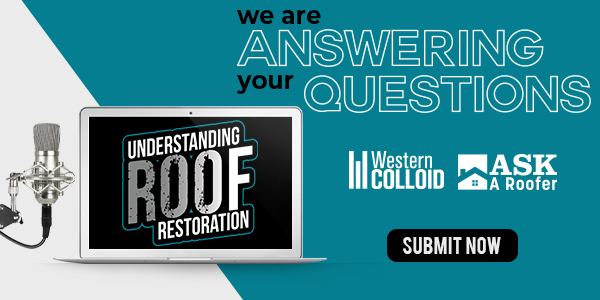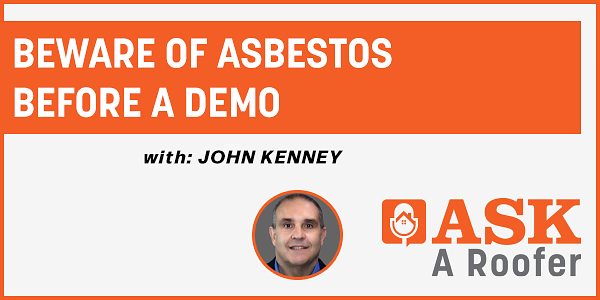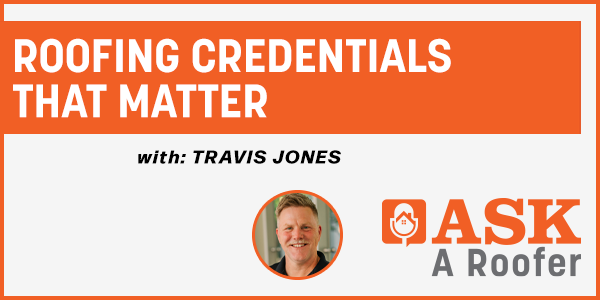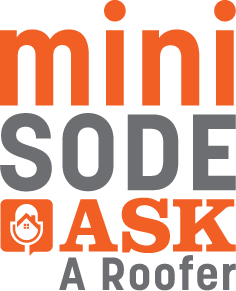Understanding Roof Restoration Episode 1 - What is The Difference in a Roof Coating And a Roof Coating System? - PODCAST TRANSCRIPTION

Editor's note: The following is the transcript of a live interview with Greg Hlavat and Hal Leland of Western Colloid. You can read the interview below, watch the podcast, listen to the podcast.
Karen Edwards:
Hello and welcome to the Understanding Roof Restoration Podcast. I'm your host, Karen Edwards from askaroofer.com.
The Understanding Roof Restoration Podcast dives deep into the topic of restoring roofs. As the popularity of roof restoration continues to grow among building owners and contractors, there are many questions that arise. With a wide variety of roofing systems on existing buildings and many available restoration options, we turn to the experts at Western Colloid to answer your questions on roof restoration. Greg Hlavaty, Hal Leland, and the team at Western Colloid have been manufacturing and installing these systems for more than 50 years, and they have seen it all. We will tackle a different topic each month and answer questions submitted by you, our listeners.
Greg and Hal, welcome.
Greg Hlavaty:
Welcome. Thanks for having us.
Karen Edwards:
Yeah. For our listeners out there, could you introduce yourselves and give us an idea of what you do there and your background?
Greg Hlavaty:
Sure. My name's Greg Hlavaty. I'm president at Western Colloid. First of all, Western Colloid is a manufacturer of roof coatings and more importantly, roof systems that are built from roof coatings, roof membranes for the restoration industry. My background is, I started in, believe it or not, in the '60s in commercial roofing with my father, who was a commercial roofing product salesman and got into the both commercial roofing and roof coatings along with it. Because, that was the birth period of roof coatings at that time, the 1960s, the first go around, which I'll talk about a little bit. From then on stayed in the roofing industry, in wholesale distribution, roof manufacturing and coating manufacturing. So, I have a varied background, especially in the commercial roofing side of over 50 years and leading up to the last two or three decades, which has been really dedicated to roof coatings and roof restoration systems.
Karen Edwards:
Wow, that's quite a history and quite a background. Hal.
Hal Leland:
Yeah. I grew up in Montana and I studied chemistry and business at Montana State University. I got into roofing in San Diego about 30 years ago and 10 years after that I met Greg and I've been working with him for 30 years. I'm general manager in Western Colloid out of northern California. I do sales support. I work with the chemistry, the products, the codes and standards and testing of the products.
Karen Edwards:
Excellent. Wow. We're going to dive right in. This is our season one episode one, and we are tackling a big question this month and that is, what is the difference between a roof coating and a roof coating system? Help us understand what that difference is.
Greg Hlavaty:
I'm going to start out with a little bit of history, at least in our world, how these roof coating systems came about. In the 1960s into the early '70s, there began to be used roof coatings as part of a commercial built up roofing system. Believe it or not, the early systems were very similar to what they are now. No pun intended, but the first pioneer in this was Pioneer Flintkote. Pioneer Flintkote developed the Monoform system, which was using asphalt emulsion. They found that if they took asphalt, mixed it with bentonite clay and water, they could make a very stable, long weathering surface, instead of... Because traditionally they had put on hot asphalt as a surface. They would blaze a roof with hot asphalt, or they would glaze a roof with and throw gravel into it.
That was what was done in the '40s, '50s, and '60s. Pioneer Flintkote had a great asphalt chemist that developed a way of blending asphalt, bentonite clay and water, making a very stable surface that they could then weather this... They put layers of built up roofing and put the asphalt emulsion on. But to put it on thick enough, they started putting reinforcements into it. Yellow jacket, we call it today. Fiberglass mats and reinforcing it and building it up in thicker and thicker layers. Pioneer Flintkote called that Monoform. They had a person that developed a spray gun that would take the chopped glass like they do on a boat or a shower stall. Taking those chopped glass strands and shoot those directly into the emulsion as it's being sprayed onto the roof. That became a very well known system in the '70s, Monoform. Other manufacturers, Johns Manville had TopShield. The founder of our company was a Monoform applicator, and then started his own company and built his own equipment and he called his system Glass-Shield.
John Manville called theirs TopShield. N.Bird & Son had a form of that surfacing. Over that smooth asphalt reinforced system that they put over these new roofs, they would either put on aluminum and then they started putting on acrylic. The early acrylics, which aren't the same as today's acrylics, to reflect the sun, they keep the UV off of it. The founder of our company took that knowledge and that ability and said, "If we can put this on new roofs, why can't we rejuvenate or restore existing roofs, that are wearing out?" Because, a lot of these old older roofs were just blazed asphalt. As I said, some of them had granules, what have you. So he started putting on the asphalt emulsion, the chop fiberglass strands in varying layers and degrees and restoring old roofs, getting as much as double the life of a normal a roof's span out of it.
As technology changed and the reflective coatings got better, the acrylics got better. It gradually changed from aluminum to the acrylics, which we're using today. Polyester fabric came in, which is... Chopped fiberglass adds a great deal of tensile strength to the roof, but not a lot of elongation. In the west here we have a lot of heat thaw, heat and cold cycles. So, there's a lot of roof flexing and expansion. Polyester fabric, which is very lightweight, but has a very high strain energy, which is a combination of tensile and elongation added to the mix. A restoration system that was built in the early days from just a coating to a reinforced coating to a flexible reinforced coating was developed. We have put that on hundreds of millions of feet of roofs over the years.
The coatings have always been around as a repair of a roof, go up, repair a roof, bandaid it, and then, put a coating on it to stabilize it for a while. But, the founder of our company took that to a new level, which was actually, restore it to as good as new condition, with adding strength back, adding elongation back. That's the difference when you put a repair and a coating on, you've extended the life by reflective means and by shedding a little bit of the water and the weather, but you haven't really had it added back all those things that were there originally, which is strength, tensile strength, the elongation, the resistance to foot traffic, and all the wear and tear that a roof really comes under. A good restoration system will do that. It'll add all those characteristics back to that roof and not just the one characteristic of surface weathering. That's the difference. A coating system adds surface weathering, but a full restoration system adds all the characteristics that a roof needs to withstand all the weather elements for decades.
Karen Edwards:
Wow. Yeah. I think that in the industry and among building owners, that's not widely understood. We lump coatings into this one category and that people don't really understand that difference. Now Hal, you spend a lot of time, I'm sure you're out in the field talking with building owners, talking with contractors. Do you run into this a lot and probably have to provide some education on the differences?
Hal Leland:
Well, that used to be the mindset up until about 15 years ago, actually. People were... It was a coating only. We would coat the roof, we'd keep the sun off it, we'd stop the thermal cycling, we'd put the roof to sleep. That's what a lot of our major competitors do. That's all they have, a reflective coating. That's the least thing we do. Even back when our founder Larry Widmer... Greg was talking about chopped glass emulsion. He was doing that in Montana and he had a quantum mind. He actually got one of our FM approved ratings, a fire rating. One of the great things about asphalt emulsion is that it doesn't burn. So, that's given the basis for a lot of our testing. We do a lot of testing at ICC-ES. We test at Ewell, we test at Miami-Dade.
But probably the most important place that we test is FM Global. I don't know if everyone's heard of FM Global. They probably should have. A fun fact. FM Global was founded in 1835. It's the largest testing facility in the world. Their West Glochester, Rhode Island campus is 1600 acres. It's the world's largest and most sophisticated center for advancing the science of property loss prevention. That's where I started going 15 years ago. I've gone back there I think 15 times. We've probably spent just over a million dollars there in testing. It's a big deal and it's what has helped us really grow our systems and our assemblies.
After going through and testing the 4470, which is ASTMD 108, spread of flame. There's FM severe hail, there's susceptibility to leakage, there's foot traffic, there's wind uplift. I've got, I think 18 of our systems, 4470 approved at FM Global, which is a really big deal, which allows me to walk into any architect's office, any consultant's office, anywhere in the world. They're going to ask me to sit down because I've done the task, I've spent the money. That's all I have to say about that.
Greg Hlavaty:
It takes it to the next level because the specifiers, the building owners in part... But the building owners rely on often about a consultant or an architect. Those consultants and architects, their jobs are on the line. For a lot of years, they liked coatings. But they said, "Okay, I know they work, but I don't know how long it's going to make your roof last. I don't know how long." And now they have, as we say, "We're going to give you something to hang your hat on, we're going to give you the testing to back up that these are more than just a coating system. These are membrane systems." And they're rated as a maintenance and repair, which is important for tax reasons and other reasons for the building owners, because they add very little weight to the system compared to the original.
They're still a maintenance and repair, but they have the testing, as Hal has said and done, to give the confidence that a sophisticated building owner or architect or consultant need to put in their file when they're working on a project. We give them all of the ammunition they need to feel comfortable in specifying these kind of things. That trickles down to the guy that we sell to, with a pickup and five gallon pails and goes up on a roof. He has that same backing from us as the big guy who's doing a 5,000 square job that's supplied by a major consultant. It gives contractors and building owners a lot of confidence. Because of that, in our world, it's becoming more and more known. But, it's not known everywhere. It's still not accepted in all parts.
The upper Midwest and the Northeast have a different story than I just told about coatings and maintenance systems and restoration. In our world, it's becoming more and better known. We spend a lot of time at IIBEC, which used to be a Roofing Consultants Institute. Now it's the IIBEC. We find more and more consultants are learning about this every year because it's an important factor. The thing is, also that I didn't mention, but I think it's important or at least interesting, that the things we were doing in the '60s and '70s are now the new hot thing. Putting reflective coatings on, keeping a roof cool. Using water-based systems that have zero or low VOC, all the things that are the hot buttons today that they're pushing, is just something... It's been an everyday thing for us for over 50 years. We didn't move into it and say this is a hot new thing. It was just our thing. We're proud of that.
But it's, more and more people are catching on and we like to see that. We love to see good... There's a lot of good competitive manufacturers out there that are doing the right thing and stepping up, moving up into the system world, from the coating only world. I had something, I've been president of the Roof Coating Manufacturers Association, president of the Reflective Roof Coating Institute. I am on the board there at the RCMA. I've told some of our fellow manufacturers that... At least in my belief, I say, "A lot of you are coating manufacturers, but you are membrane manufacturers, you just don't know it yet." In other words, they haven't merged into that world. But they will, because the other part of this industry that is important is that we're also not tearing off roofs and filling landfills.
That's a huge factor today, not from us. Call Uncle Sam. They claim that 15% of the landfills in the United States are filled with roof tear off waste. That sounds like a lot to me, but I guess with insulation and that, they're the experts. We're cutting that back by a dramatic amount. There's no reason to tear off a roof, because when a building owner needs the walls done, they don't tear them down and put a new wall up. They paint it, they wallpaper it, they put texture coats on it. When the floors are getting old, they don't chisel up the floors and put down the new floor, or pour more concrete. They put tile overlay. They put carpet. They put other things. So they restore it to a new condition. But in roofing, historically, we've torn it off every 15 years and hauled it to the dump. Let's put another one on. No, 15 years, let's tear it off. Or 15 to 20, let's tear it off, haul it to the dump and put another one on.
We're changing that perception like they do with the rest of the building. Let's keep it in place and modernize it and weatherize it.
Speaker 2:
Curious what your thoughts are on why you said some other parts of the country, it's taking a little bit longer to catch on. I guess maybe, in the Midwest and the Northeast. Is it older buildings? We've always done it this way. We love our traditional method. What do you think?
Greg Hlavaty:
There are multiple reasons for that. The first one is weather. The systems we use are mostly water base. That's a tougher thing to do in the cold climates. They have a much smaller window. You can do it back there, because we do and other manufacturers do. The Pacific Northwest was our founding location. A place that rains all winter early, you have a shorter time. But, that's where our founders started his program, was in the Pacific Northwest in Washington State and Oregon then moved down into California. So, it can be done. You have to do it in a different way, but it's harder.
If I was to tell you the history of the Midwest and Northeast, it would have been a different history than the history I just gave you because it would've been companies like Tremco and Ruberoid and a few others, RPM Republic Powdered Metals that were doing coating systems. They were resaturating gravel roofs with solvent, almost all solvent base. Because, that way the weather didn't affect them as much. They were solvent based systems. Well today, solvent base isn't used. They don't like it because of the VOCs and the chemicals in that. Evolving from that old solvent based system that can be used in the weather of that part of the country and moving it into the water based systems, we have new technology that will allow you to do that. You're still held to freezing and wet weather, but it can be done. It's a slower movement.
Hal Leland:
Slower growth.
Greg Hlavaty:
Yeah, slower growth.
Karen Edwards:
This podcast is brought to you by AskARoofer and Western Colloid Fluid Applied Roofing. When you're looking for answers for your roof, what better place than askaroofer.com ? If you are looking for answers on restoring your commercial, industrial or low slope roof, look no further than Western Colloid. For over 50 years they have been bringing old roofs, new life. Together, we're helping contractors, building owners, property managers, architects, engineers and consultants choose the best commercial roofing system. Find Western Colloid today, on askaroofer.com.
Talk to me a little bit about the longevity, because you guys have been doing this a long time. What kind of warranties and length of the proven behind performance, the proven performance of these roof coating systems? Talk a little bit about that.
Greg Hlavaty:
Well, we don't have a one system fits all, as Hal said, these tests. We have a good 18 of them, and that probably isn't all of them. Because, we have some specialty ones. We have systems for over TPO, over EPDM, over PVC, over gravel, which is something that is a real hot button for us, because most gravel roofs have to be torn off or overlaid. We have emulsion systems that can go directly over a gravel with the right preparation in the right application in varying reinforcement layers from anywhere from one layer of reinforcement all the way up to three. And warranties that go from 5 to 20 years, similar to what new construction and single ply and modified bitumen roofs supply. So depending on the building owner, depending on their budget, depending on what they expect out of that roof. Sometimes people just want a bandaid, "Hey, I'm going to be selling this roof in five years. So, a coating system is right."
Hal Leland:
These are all renewable and sustainable systems. So, at the end of that 10 years or that 15 years or that 20 years, we simply go up there, inspect the roof, do any necessary maintenance. The maintenance systems, we pay a lot of money to keep them as maintenance systems with UL, with FM, with ICCES, with Miami-Dade, which means they would all come in, they do follow up services with us. After we test, we're not over. We're in for life. They come and they check out the formulations, they make sure that we're doing everything right. They check batch tickets. They check certificates of analysis for raw materials.
But at the end of the day, these are all renewable and sustainable. You can recoat these roofs and theoretically, whatever system is right for that building can be the last system you ever have to put on that structure. I'm in my third cycle in Hawaii, 10-year warranty extensions. We put on a 10-year, all acrylic system. In 10 years we recoated it, gave another 10 years. We did it again. We're on every military base in the state of Hawaii. There are certain places where we're very strong, the Sunbelt mostly, but these are sustainable renewable systems.
Greg Hlavaty:
Right.
Karen Edwards:
Excellent.
Greg Hlavaty:
We have one roof, just as a quick point, that was done was originally put on during World War II here in Southern California. Now it's owned by Randall Farms. They were barrel roofs with gravel on them. The owner of our company, I think it was a year or two before he started Western Colloid, actually went up, in the '60s, I believe it was, went up and put a chopped glass and emulsion overlay over that gravel. They vacuumed all the gravel off. They put a couple layers of chopped glass with emulsion on it and aluminum coating. We came in 16 years ago and put a third top coating on that. That original roof was put on in '41 or '42, at the beginning of World War II when they were building up the infrastructure here. That original roof is still on there. This is 2022 and that original roof was put on, it's still under there and it's still performing
Karen Edwards:
Eighty years later.
Greg Hlavaty:
It's just had restorations done over the top of it. There's more like that. But, that's one that we've been able to keep track of.
Karen Edwards:
That is fantastic. Wow, 80 years. That is impressive. That's definitely proven performance.
First of all, thank you to Greg and Hal for sharing the knowledge and wisdom around roof restoration and helping us understand the difference between a roof coating or that bandaid versus a full system, sustainable solution that performs and performs continuously.
We're going to be doing this once a month, answering questions. We want to encourage you to visit their website westerncolloid.com. That's W-E-S-T-E-R-N-C-O-L-L-O-I-D.com. You'll be able to listen to these podcasts and you'll also be able to send us your questions, because we want to help the industry to help the building owners to help our architects, everyone out there, understand all about roof restoration. If you have a specific question, a specific challenge, send them in. If we answer your question, we'll send you a gift too. That's a lot of fun.
Next month... We talked about the number of systems that you have out there that have been tested and certified and approved, and you have specialty systems. So, we know that certain ones go with certain types of roofs and certain types of buildings. We're going to focus next month on single ply and asking the question if you can restore a single ply roof and specifically TPO, PVC, the thermoplastics. So, we encourage everybody to come back next month when we tackle that topic.
Greg and Hal, thank you so much for being guests today on the podcast and I look forward to seeing you again next month.













Comments
Leave a Reply
Have an account? Login to leave a comment!
Sign In